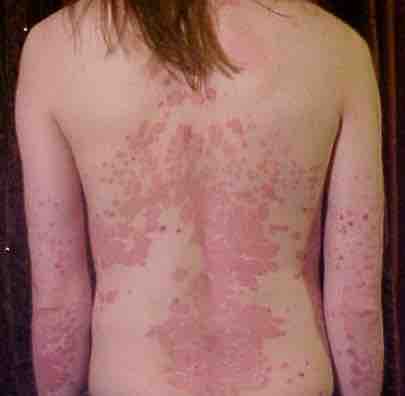Psoriasis is an autoimmune disease that affects the skin. It occurs when the immune system mistakes the skin cells as a pathogen, and sends out faulty signals that speed up the growth cycle of skin cells. Psoriasis is not contagious. The most common form, plaque psoriasis, is commonly seen as red and white colored scaly patches appearing on the top first layer of the skin. Plaques frequently occur on the skin of the elbows and knees, but can affect any area, including the back, scalp, palms of hands and soles of feet, and genitals. In contrast to eczema, psoriasis is more likely to be found on the skin of outer side of the joint rather than in the crease.
Depending on the severity and location of outbreaks, individuals may experience significant physical discomfort and some disability. Itching and pain can interfere with basic functions such as self-care, walking, and sleep. Plaques on hands and feet can prevent individuals from working at certain occupations, playing some sports, and caring for family members or a home. Quality of life is an issue for psoriasis patients, as they may feel self-conscious about the appearance of their skin and have a poor self-image that stems from fear of public rejection and psychosexual concerns. Psychological distress can lead to significant depression and social isolation.
Psoriasis is typically a lifelong condition. There is currently no cure, but various treatments can help to control the symptoms. Typically, topical agents are used for mild disease, phototherapy for moderate disease, and systemic immunosuppressant agents for severe disease.

Psoriasis
A person whose back and arms are affected by psoriasis.